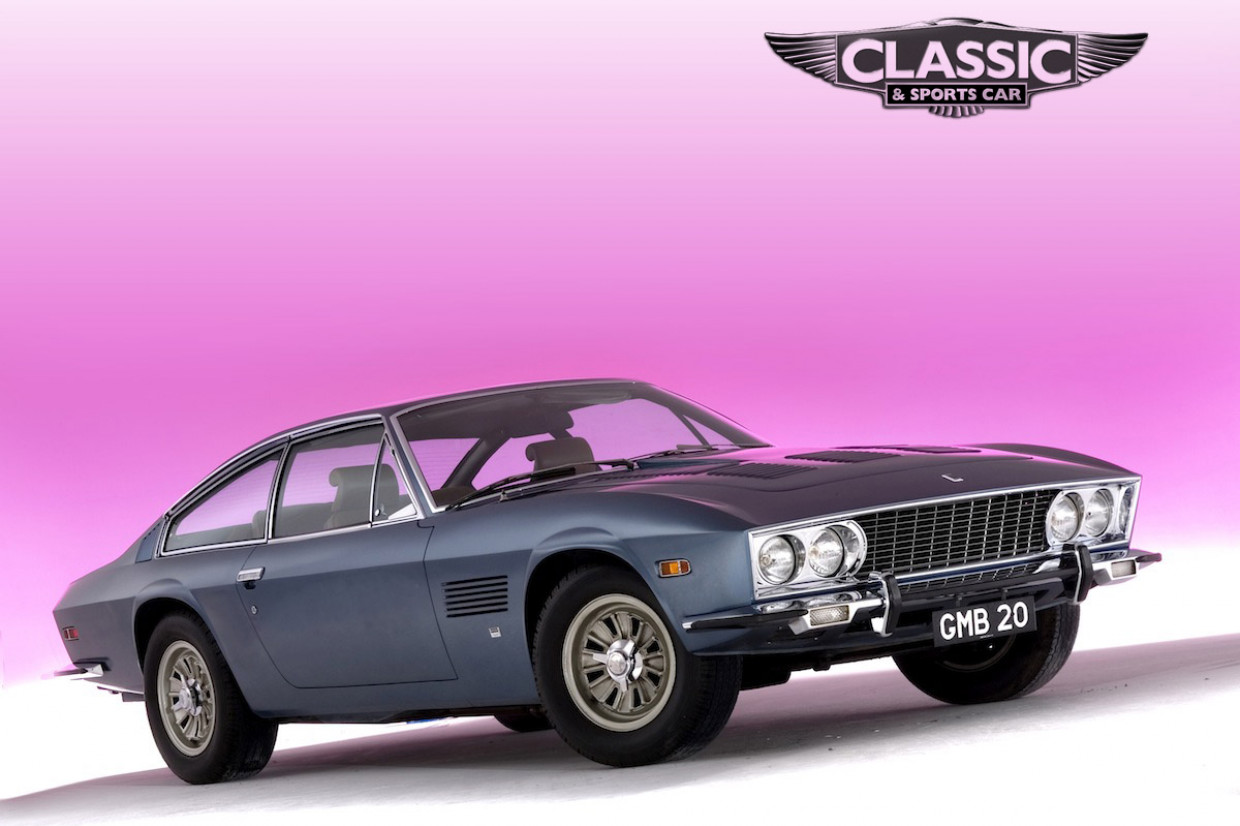
George McCulloch Bell doesn’t sound like your typical 1960s GT man. This Chicago-born playboy with a mischievous sense of fun and a passion for fast cars and motorbikes was built as big as his character. Thanks to the success of the family paper business, he headed for the fast lane across the Atlantic in the early ’60s. Determined to get involved with motor sport, Bell hooked up with German sidecar-racing legend Helmut Fath and followed the World Championship season in a succession of glamorous, super-fast V8-powered GTs.

Bell’s new Iso Grifo became a regular feature of the GP motorcycle paddocks but, frustrated by the lack of cockpit space, the bulky Bell eventually replaced it with a Bristol 411. The pace of the traditional British cruiser wasn’t enough for the American, so he contacted John Woolfe Racing about a power upgrade. Even after an engine transplant with a Keith Black Chrysler 8.3-litre and an aero package that would have given Tony Crook nightmares, Bell was soon bored and looking for a replacement. Money wasn’t a problem and, after considering all of the exclusive GT options including Jensen and Gordon-Keeble, Bell set his sights on a Monteverdi 375L. The Swiss machine’s fabled performance and sleek styling proved irresistible – even at a hefty £10,250 in 1969, enough to buy four Jaguar E-types, or a pair of Porsche 911Es with £1764 change. Rather than order through the UK concessionaire in London, Bell went straight to Binningen, a suburb of Basel, to test the Monteverdi at the factory.

Switching from the noble Bristol to the rakish looks, spectacular acceleration and sporty handling of the Monteverdi must have been like swapping an evening with Judi Dench for a date with Swiss supermodel Julie Orden. Not surprisingly, Bell did a deal and gunned the metallic sky blue 375L back to Britain. With its ability to dash from 0-60mph in 6.3 secs and a maximum speed of 152mph, few cars could have lived with the Monteverdi on the autoroute, but back in London Bell craved even more performance. Drag racer and V8 specialist Colin Mullan had already worked on Bell’s Bristol after a recommendation from JWR, and so was employed to hop up the Monteverdi. “I’d read about this Swiss supercar but never seen one,” says Mullan. “After George’s Bristol, the 375L was sensational. It was a real head-turner and I loved the looks. George was a fantastic character with a wicked way for practical jokes. He was a hot-rodder at heart and wanted it to go quicker, so we fitted a 512cu in (8391cc) Chrysler and lowered the back-axle ratio. From the lights the acceleration was amazing, but it lost a little top speed.”

Bell and Mullan became great friends and, after Fath retired following a big accident in Finland, the American was looking for a new motor sport interest. After a few trips to Santa Pod to support Mullan’s Vauxhall-backed drag racer Invader, the two hatched the idea of running a pair of Pro-Stock Mopars in Europe. With Bell’s sponsorship, a Duster and a Challenger were bought from top US team Sox & Martin and shipped to Europe. With Adrian ‘Yogi’ York and Mullan as drivers, the new team blitzed the competition. “The Monteverdi became the team’s pool car and I used it all the time,” says Mullan. “Amazing performance aside, I loved the way it drove. The ZF steering was very precise and it handled better than a Jensen. It’s still heavy but, thanks to its stiff chassis and de Dion rear end, it corners really flat without compromising the ride. The car had a dual personality: with its phenomenal torque it would cruise around lazily when you wanted, but burn off pretty much everything at the lights. With that three-speed TorqueFlite, it’s also great for long trips: I remember George using it to visit Helmut in Switzerland. To match the extra pace we replaced the Girling front discs with AP Racing brakes. Whenever I worked on it, I was always impressed by the build quality.”

The domination of Mullan’s team began to irk rivals, who eventually had both cars banned after insisting that the latest Lenco transmissions were an unfair advantage. Bell became disillusioned with the British scene and in 1975 decided it was time to return to Chicago. Mullan was so smitten with the Monteverdi that he couldn’t let it go, so traded his ’71 Pontiac Formula 400 for the Swiss beauty – minus its 512cu in engine: “As soon as I had enough money I bought the original 440cu in ‘Magnum’ engine, refitted it and started using the car.” In the late ’70s, Mullan swapped drag racing for offshore powerboat racing with the ex-Tommy Sopwith Telstar. The 375 was often driven to these glamorous events where it was much admired by other crews.






